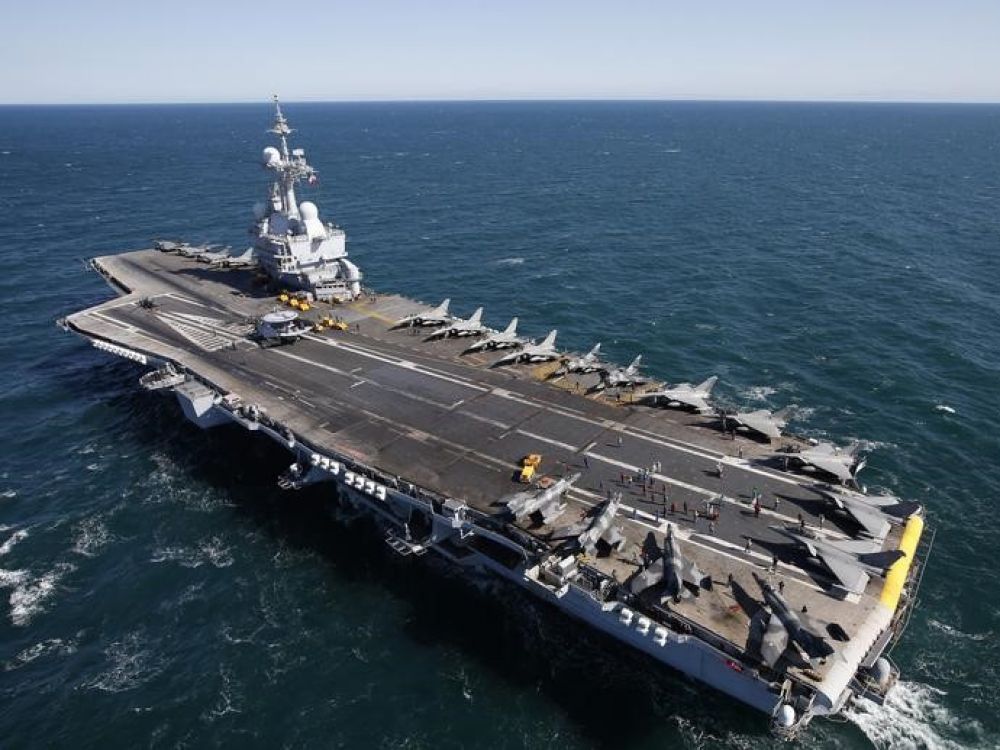How the navies of America and China are preparing for war

War between America and China is unlikely, but the two nations are preparing. And they are strengthening their military capabilities, especially maritime ones
US National Security Advisor Robert O'Brien said all Navy destroyers will be equipped with hypersonic missiles .
WHAT ARE HYPERSONIC MISSILES
These are innovative weapons, able to travel at a speed at least five times higher than that of sound and capable of striking at great distances, also guaranteeing high maneuverability. It is a technology that China is also investing in and testing a lot, according to reports from the US Department of Defense. In this regard, a video circulated in recent days showing a Chinese Xian H-6N bomber carrying a missile with a suspected hypersonic warhead.
WHAT O'BRIEN SAID
In a speech given Wednesday at the Portsmouth, Maine shipyard, Robert O'Brien said the first ships to be equipped with hypersonic missile capability will be the new Virginia-class submarines and Zumwalt-class destroyers. This capability will later be extended to all Arleigh Burke-class destroyers.
O'Brien's statement is not isolated, but adds to other sentences uttered by both himself and other high-ranking officials in the Trump administration. All of which fit into a precise context: the growing tensions with China and the need for the United States to secure maritime superiority.
THE GROWTH OF CHINESE MILITARY CAPACITY
China wants to be the first global power and is adapting its military capabilities to its ambitions: Beijing intends to complete the modernization of its armed forces by 2035 and to be able to deploy a first-rate army by 2050.
In the event – at the unlikely moment – that America and China come to war, the theater of this clash will probably be the Pacific. Two years ago the American Vice President Mike Pence said in fact that "China wants nothing less than to expel the United States of America from the Western Pacific".
The area is actually very "hot": it is here, that is, that the friction between the two superpowers is concentrated; and it is here that Washington pushes for the creation of an explicit anti-Chinese alliance ( without, however, meeting the favor of the countries of the region ).
In the event of a conflict, however, China is preparing. It has its own satellite navigation system, BeiDou , whose location services in the Pacific would be more accurate than those of US GPS. And it has increased the number of ships in its military fleet, which is now the largest in the world, more than America's.
THE UNITED STATES ALERT
The numerical superiority of the Chinese navy has put the United States on alert, whose geopolitical priority is precisely the domination of the seas.
The increased size of the Chinese fleet is not sufficient to guarantee Beijing victory in the event of war. Unlike the US, the Chinese navy has no combat experience, even though it is intensifying its exercises. The United States, then, can count on a network of trusted allies in the Pacific, such as Australia, Japan and South Korea.
There is no doubt, however, that the gap between America and China is narrowing. Just as there is no doubt that Washington is discussing how to strengthen US military capabilities, including for deterrence purposes.
THE 2045 BATTLE FORCE PLAN
On 6 October, Defense Secretary Mark Esper said that the US Navy will have to equip itself with 500 manned and unmanned ships to ensure maritime superiority over China in the coming decades. He currently owns 296.
The objective is part of the "Battle Force 2045" plan: it provides that, before 2035 – when Beijing completes the modernization of the army – Washington will equip itself with 335 conventional ships.
The priority, according to Esper, is submarines. To these are added unmanned ships (from 140 to 240), amphibious ones (50-60), aircraft carriers. Such a large fleet requires adequate, enormous expenditure. For fiscal year 2021, the Trump administration has requested a budget of 207 billion dollars for the navy, of which 19.9 will go to shipbuilding.
A NEW ARMS RACE?
Some analysts believe that the United States wants to re-propose with China the scenario of the "arms race" during the Cold War with the Soviet Union: to dramatically increase military spending to force Beijing to increase it in turn, to the point of pushing it to failure. But China is not the USSR, even from an economic point of view, and it will hardly meet the same fate.
QUANTITY AND QUALITY
The size of the fleet counts, but it is not everything: in addition to quantity, the United States must also focus on the quality of the ships.
The new naval warfare requires smaller and more agile vessels, capable of moving and "dispersing" more quickly in order to escape missiles and radar. Unmanned ships are preferable to traditional ones due to their small size and lower construction and maintenance costs. Ships without personnel on board, moreover, have the not insignificant advantage of being able to be used in a more audacious way, without fear of human losses.
However, there are logistical difficulties. Unmanned attack ships will need to be controlled remotely, which implies the need to strengthen communications to keep them safe from cyberattacks. Small ships, then, not able to cover the same distances as larger boats, will need bases and platforms scattered around the Pacific: the United States will have to enter into negotiations with the countries of the region, which could prove complicated.
Finally, ships need air support. And for America it would not make sense – writes the Economist – to have unmanned ships but planes with pilots, like the new generation F / A-XX fighters.
This is a machine translation from Italian language of a post published on Start Magazine at the URL https://www.startmag.it/mondo/guerra-america-cina-marina-militare/ on Sat, 24 Oct 2020 06:08:25 +0000.
